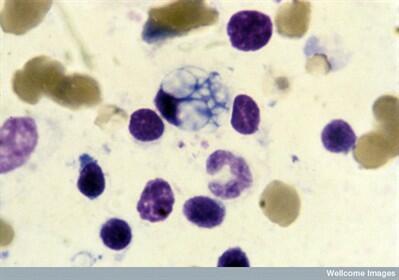
Researchers from the Cochrane Infectious Disease Group, co-ordinated through the editorial base in LSTM, conducted an independent review into the effectiveness of rapid diagnostic tests in diagnosing patients with visceral leishmaniasis (VL), published in The Cochrane Library today.
VL (or kala-azar) is caused by a parasite and results in fever, a large spleen and other health problems. It occurs in India, Bangladesh and Nepal, east Africa, the Mediterranean region and Brazil. Without treatment it can be fatal, and proper treatment can result in cure, so diagnosis is extremely important. The diagnosis of (VL) relies on showing Leishmania parasites in tissue samples and on serological tests. Parasitological techniques are invasive, require sophisticated laboratories, consume time, or lack accuracy. Recently, rapid diagnostic tests (RDTs) that are easy to perform and safe have become available.
Researchers found 24 studies, which contained information about five different RDTs, with a total of 4271 participants. The report describes how accurate these rapid diagnostic tests are for diagnosing VL in people who, according to their physicians, could have the disease. Only studies in which the researchers had used established methods to distinguish the people with VL from those who did not have the disease were used in the review.
One RDT, the rK39 immunochromatographic test gave correct, positive results in 92% of the people with VL and it gave correct, negative results in 92% of the people who did not have the disease. The test worked better in India and Nepal than in east Africa. In India and Nepal, it gave correct, positive results in 97% of the people with the disease. In east Africa, it gave correct, positive results in only 85% of the people with the disease.
A second RDT, the latex agglutination test gave correct, positive results in 64% of the people with the disease and it gave correct, negative results in 93% of the people without the disease. For the other RDTs evaluated, there are too few studies to assess their accuracy.
Each index test was analysed separately and to ensure differences were accounted for correctly the following factors were explored: geographical area, commercial brand of index test, type of reference standard, disease prevalence, study size, and risk of bias.
Marleen Boelaert from Institute of Tropical Medicine, Antwerp, one of the authors of the review said:“The best chance of a cure for VL lies in a correct diagnosis, so utilising accurate RDTs is of paramount importance. Our review indicates that the rK39 ICT shows higher sensitivity and specificity for the diagnosis of VL in patients with febrile splenomegaly and no previous history of the disease than the latex agglutination test, but the sensitivity is notably lower in east Africa than in the Indian subcontinent. The size of the studies involving the other RDTs lack accuracy, validation, or both.”
http://onlinelibrary.wiley.com/doi/10.1002/14651858.CD009135.pub2/abstract